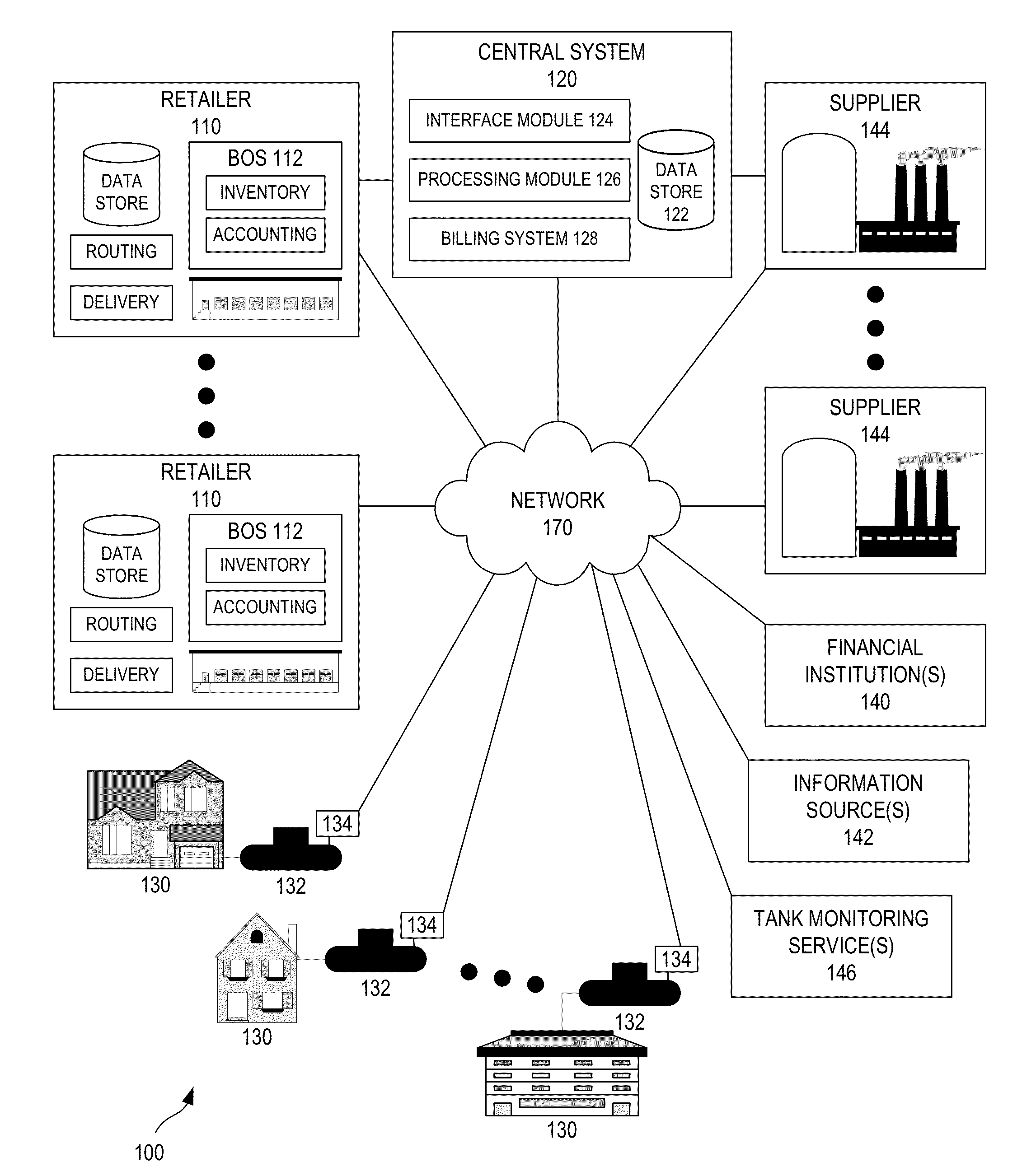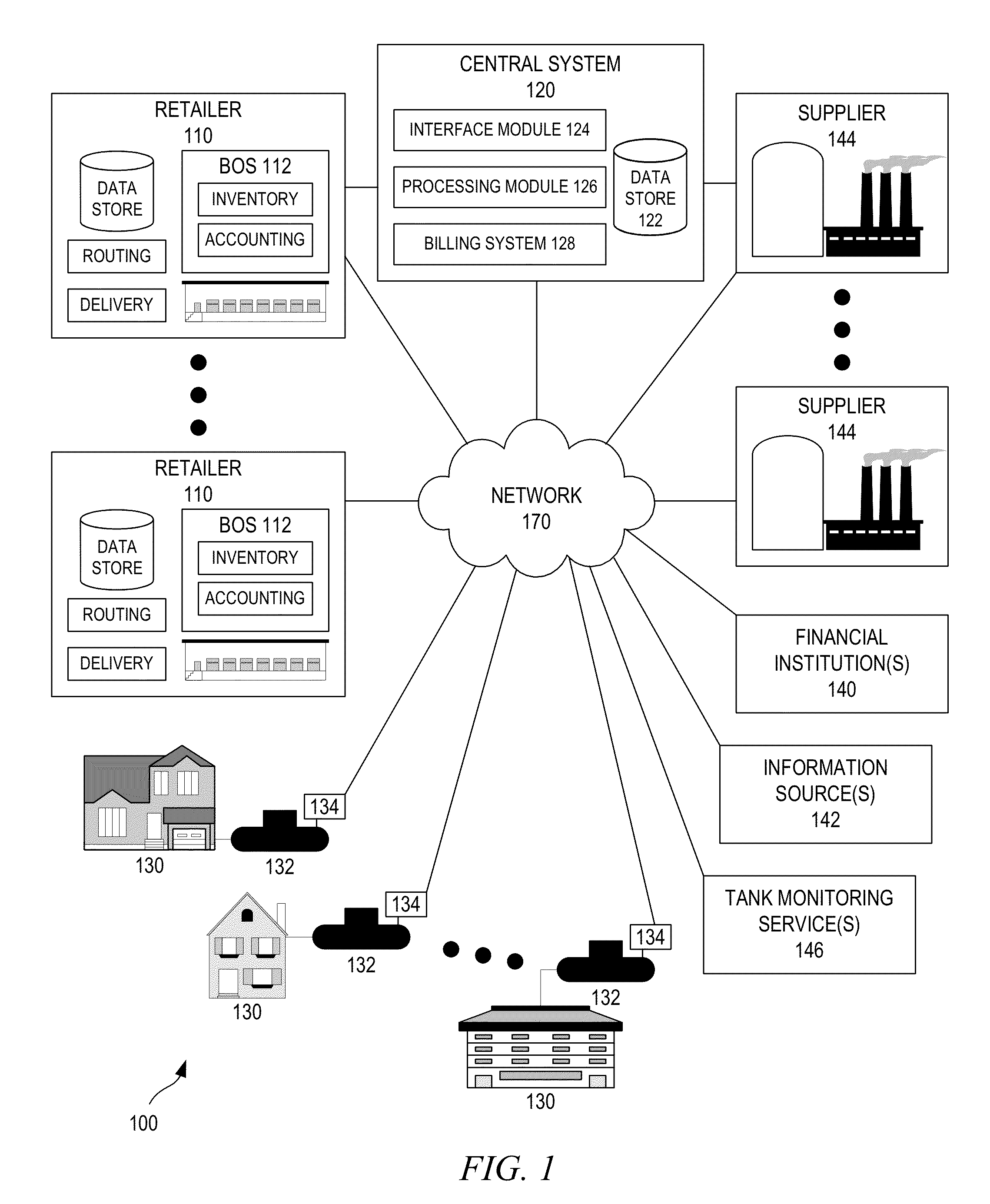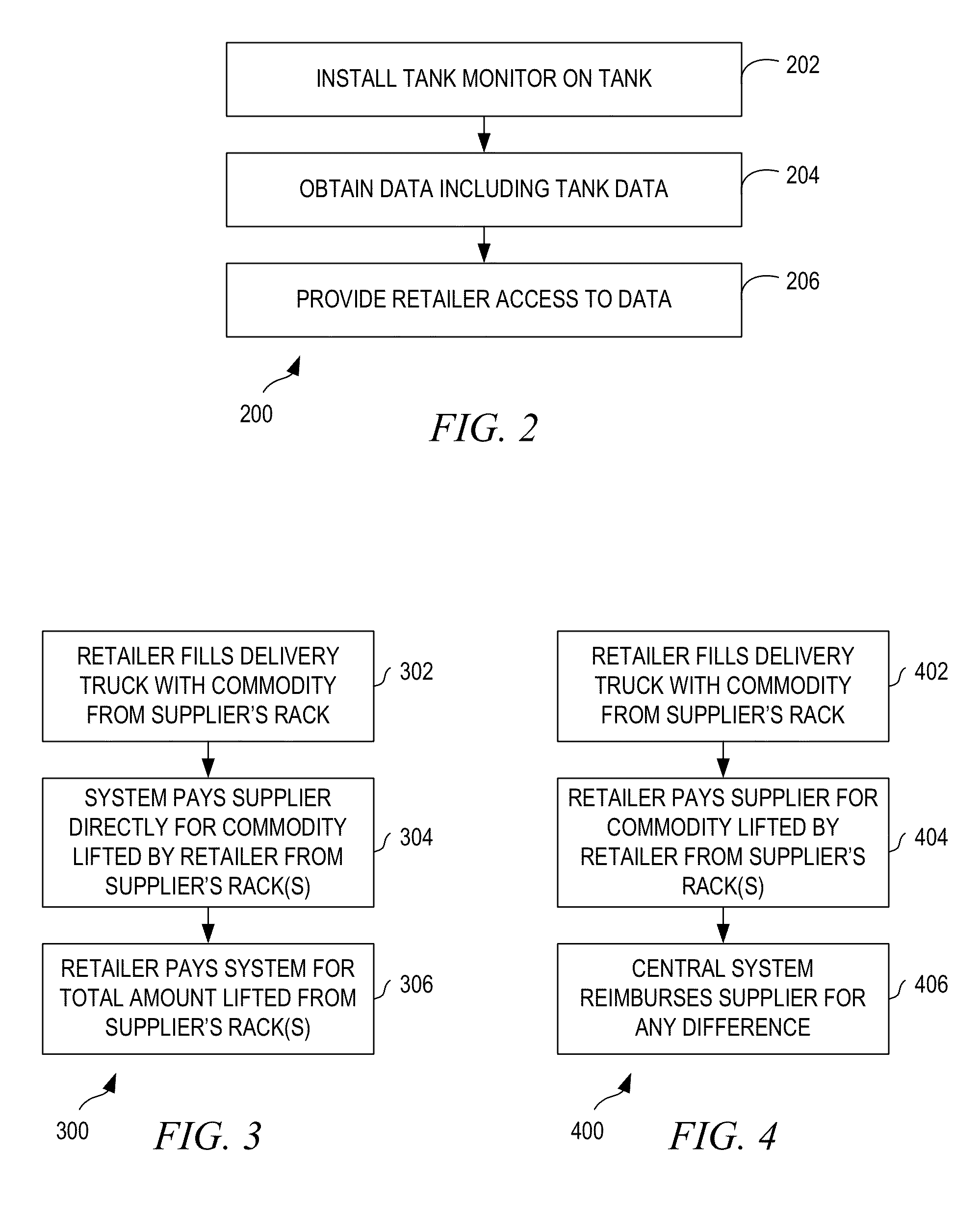Certain
consumables are more volatile than others, however.
These commodities are usually in relatively heavy demand or are widely consumed such that any disruption in the supply of the consumable may cause a commensurate market spike in the prices of these goods.
Disruptions in the supply of these
consumables (or commodities from which these products are produced) such as those caused by worlds events, natural disasters, etc. may cause the price of these consumables to jump markedly in a relatively short amount of time.
These price spikes are quite noticeable, as these types of products are extensively consumed and fluctuations in the price of these products may occur relatively rapidly.
This time spread may put the retailers in a difficult position with respect to payments owed versus payments received.
As the cost of making deliveries by a retailer is currently high, and will seemingly increase in the future because of costs such as
fuel delivery truck equipment, delivery labor, delivery motor fuels, insurance and related administrative expenses; frequent deliveries of
heating oil to a
consumer are uneconomical.
As heating oil costs have increased dramatically (e.g., up to 100%-200%) in recent years, the up-front costs of these heating oil deliveries has soared, challenging both commercial and residential household budgets.
Furthermore, dramatically increasing day-to-day fuel price volatility has made the timing of delivery (resupply) decisions by the retailer critical.
This situation exists both because these decisions are out of the control of the consumer and additionally because the consumer is charged the retail price prevailing on the day of the delivery resupply event.
As the timing decisions of deliveries is solely within the purview of the retailer, the consumer may be completely exposed to any prevailing market price and large uncertain payment requirements without advance knowledge of the timing or cost of the incoming delivery.
This “blunt force” payment spreading method suffers from numerous disadvantages such as that the “fixed price” is usually set before the use season and it may be higher or lower than actual prevailing retail price during the actual period when the heating oil is utilized.
If retail prices drop during the period during which the heating oil is consumer the end consumer is required to continue to pay the higher contracted fixed price unless, in certain instances, they have purchased very expensive “cap” insurance that allows their fixed fuel price to drop when fuel market prices drop.
However, even these expensive “cap” insurance arrangements may
expose the consumer to the volatile retail price of fuel on the day when the fuel is delivered by the supplier.
The volume estimates may be incorrect based upon unexpected weather volatility or other issues, which
expose end consumers to over or underpayments and residual additional unexpected cash payments or very large cash prepayments.
Moreover, these programs continue to rely on large working capital-intensive and expensive fuel inventory safety stocks as fuel deliveries continue to be based solely upon supplier estimates or rules of
thumb.
In addition to imposing a burden on consumers, the current heating delivery
ecosystem may additionally create friction between a consumer and a retailer, as a consumer may pay a high price for a delivery occurring one day while his neighbor may pay a significantly lower price for heating oil delivered only a short time earlier or later.
This dissatisfaction with retailers along with the consumer's ownership of both the tank hardware and the heating oil within the tank has resulted in a large degree of switching of consumers between retailers.
In fact, some of the biggest retailers of heating oil may experience a gross
loss rate of 10% or more of their entire consumer base each year.
Retailers also have various other problems in this
ecosystem.
 Login to View More
Login to View More  Login to View More
Login to View More 


